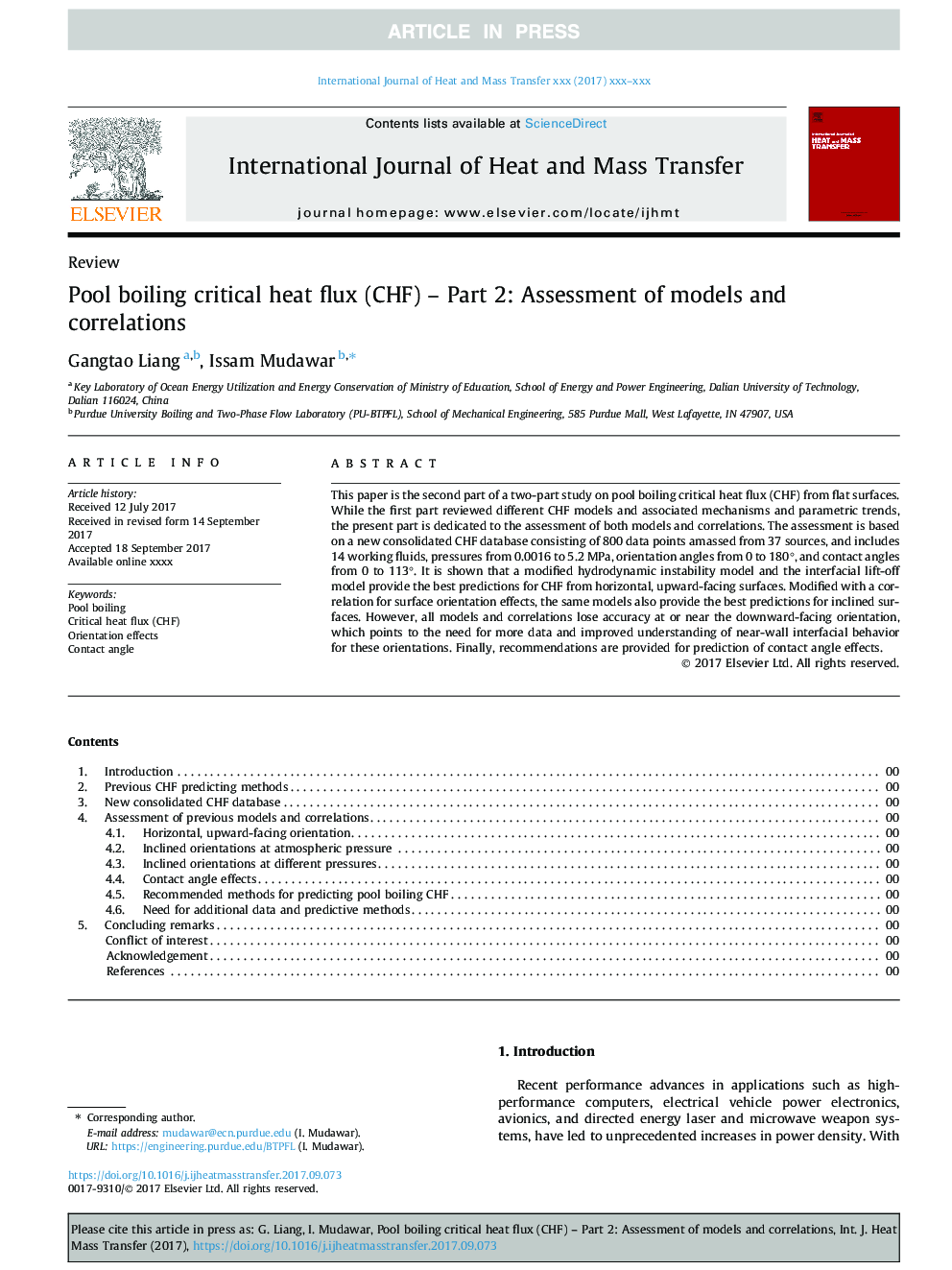| Article ID | Journal | Published Year | Pages | File Type |
|---|---|---|---|---|
| 7054794 | International Journal of Heat and Mass Transfer | 2018 | 16 Pages |
Abstract
This paper is the second part of a two-part study on pool boiling critical heat flux (CHF) from flat surfaces. While the first part reviewed different CHF models and associated mechanisms and parametric trends, the present part is dedicated to the assessment of both models and correlations. The assessment is based on a new consolidated CHF database consisting of 800 data points amassed from 37 sources, and includes 14 working fluids, pressures from 0.0016 to 5.2 MPa, orientation angles from 0 to 180°, and contact angles from 0 to 113°. It is shown that a modified hydrodynamic instability model and the interfacial lift-off model provide the best predictions for CHF from horizontal, upward-facing surfaces. Modified with a correlation for surface orientation effects, the same models also provide the best predictions for inclined surfaces. However, all models and correlations lose accuracy at or near the downward-facing orientation, which points to the need for more data and improved understanding of near-wall interfacial behavior for these orientations. Finally, recommendations are provided for prediction of contact angle effects.
Related Topics
Physical Sciences and Engineering
Chemical Engineering
Fluid Flow and Transfer Processes
Authors
Gangtao Liang, Issam Mudawar,
